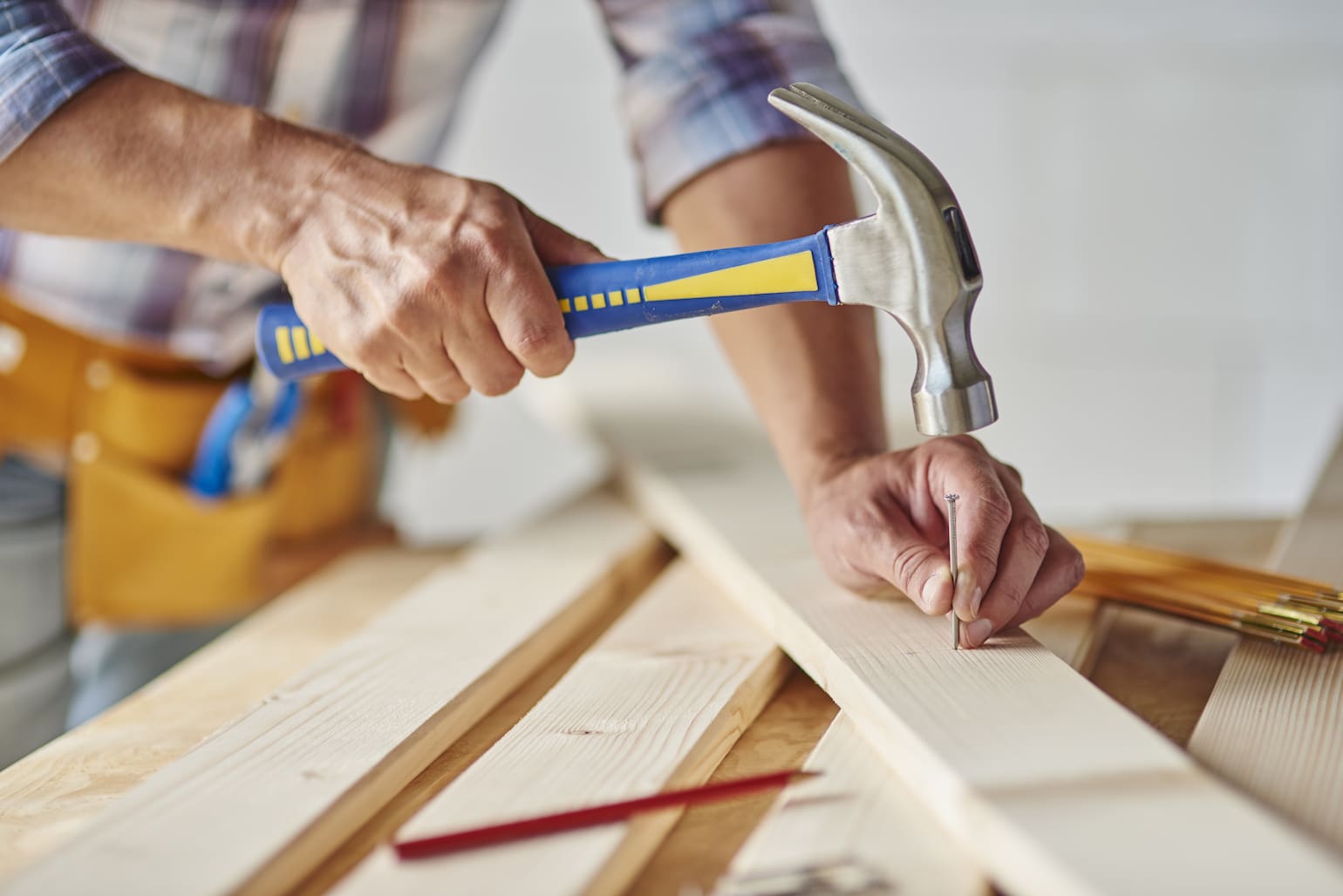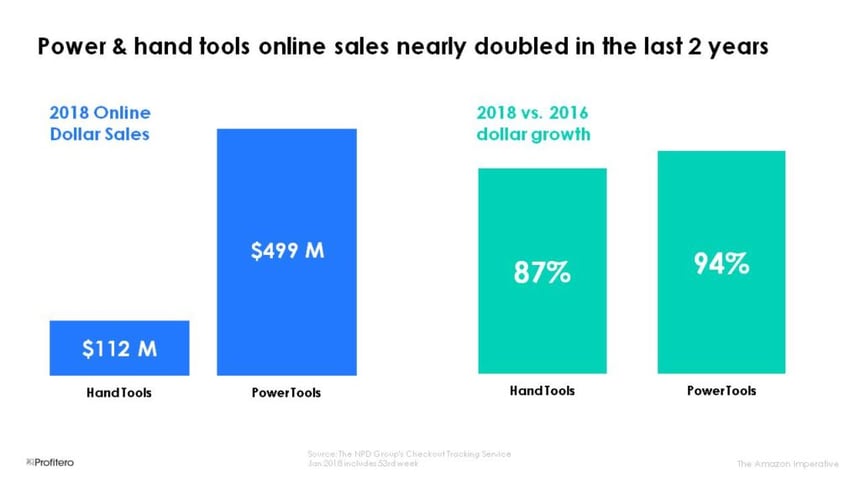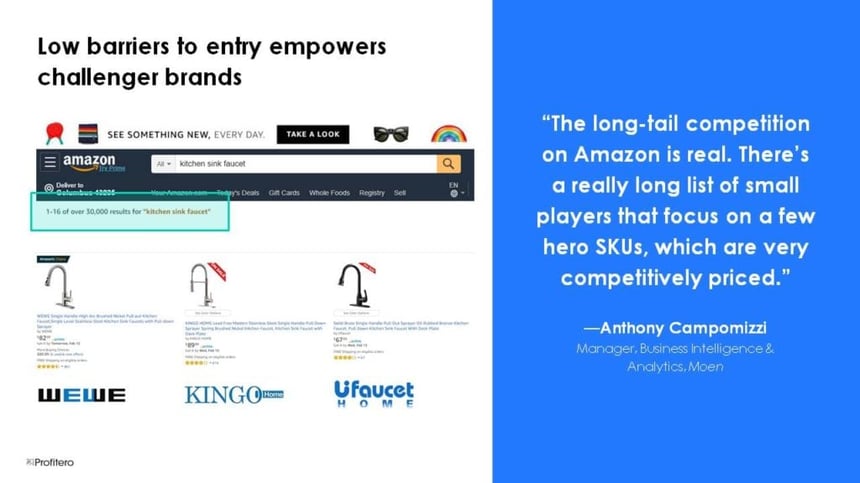

Not more than a few years ago, industry pundits thought the tools & home improvement category would be immune to eCommerce. A few reasons why:
- Major brick & mortar incumbents (The Home Depot and Lowe’s in the U.S.; or Argos, B&Q and Homebase in the U.K.) were too powerful
- Shoppers would never be willing to buy home improvement products without heavy customer service and support in the store
- Everyone believed home improvement products — like roofing, flooring, paint, etc. — were too bulky for online shipping
But guess what? They were wrong. As Profitero covered in our recent webinar, the home improvement category is facing eCommerce disruption as much as — if not more than — any category.
Here are our 3 reasons why tools & home improvement brands need to take eCommerce seriously taken from The Amazon Playbook for Tools & Home Improvement Brands.
1. eCommerce growth is outpacing brick-and-mortar growth by 6:1
According to The NPD Group, U.S. home improvement sales online were up an impressive 33% in 2018, compared with less than 5% total channel growth. Some categories are growing even faster. For example, online sales of power tools and hand tools have nearly doubled since 2016 (+94% and +87%, respectively).
Online sales penetration in the U.S. reached 17% in 2018, with continued growth on the horizon. As Perry James, President of U.S. Hardlines at NPD told Profitero: “By 2025, home improvement is not likely to be as highly penetrated online as a category like TVs where upwards of 50% could be sold online, but it is going to grow. Even if it’s not to the same degree as tech or books, it’s going to be a big change for brands in the coming years.”
Like nearly every other category it’s disrupted, Amazon holds the lion’s share of home improvement sales online with 82% market share, according to Jumpshot’s eCommerce Data Report.
There’s no denying it — home improvement brands need to follow the growth, which clearly is headed online and, in particular, on Amazon.

2. Millennials are aging into home ownership
Shifting shopper demographics are one of the key reasons why DIY and home improvement products are building momentum online.
Millennials account for approximately 50% of online DIY purchases, according to a study by Venveo; they’re also heavy Amazon users. In the next 10 years, a huge number of millennials will be getting married and buying their first homes, according to U.S. Census Bureau projections.
This means we should expect a bump up in home improvement spending, with many of those dollars increasingly moving online.

3. Smaller challenger brands will eat your lunch
One of the most common comments we hear from our clients is: “Who are these challenger brands selling online? I just don’t recognize them from the brick-and-mortar world.”
That’s because the virtual aisles online are indeed endless. Low barriers to entry for selling on Amazon empower small brands to reach more shoppers and defy the distribution moats large brands enjoy at The Home Depot, Lowe’s, etc. These challenger brands could easily steal away market share and gain ground if you’re not there — or even if you are, and not paying attention.
See for yourself. Type a common search term like “kitchen sink faucet” in the search field on Amazon. We did, and our results yielded 30,000 items! There’s no way around it, you will find a proliferation of small challenger brands and low-priced imports making a play for your category on Amazon — this is very different than brick and mortar.

It also underscores the importance that (1) not only do you need to make your products available on Amazon, but (2) you must clearly define your value proposition in light of the increased competition, and (3) figure out how to optimize your digital shelf so shoppers can find and choose your brand and not the competitor’s.
To learn more, download The Amazon Playbook for Tools & Home Improvement Brands.


























